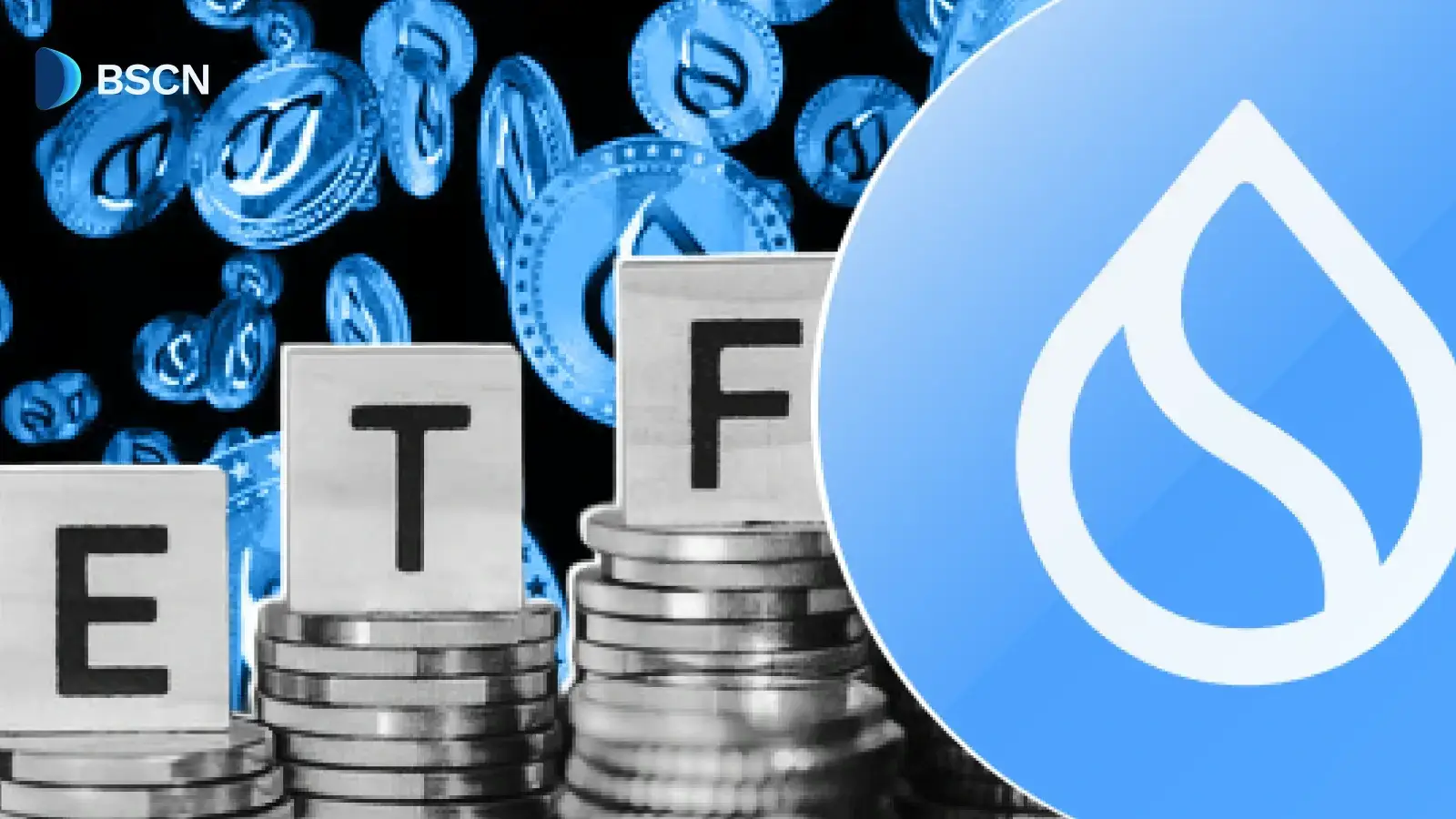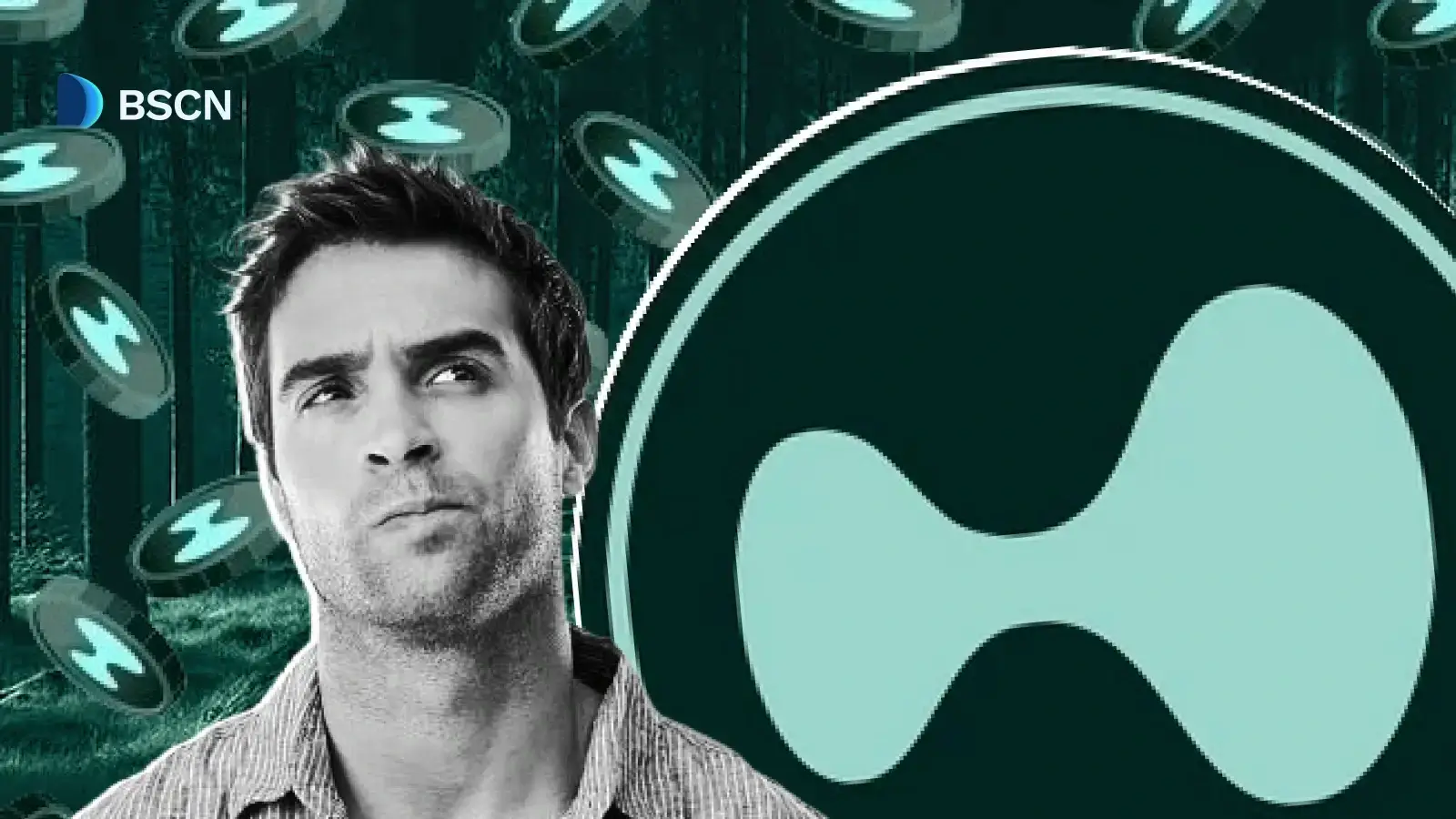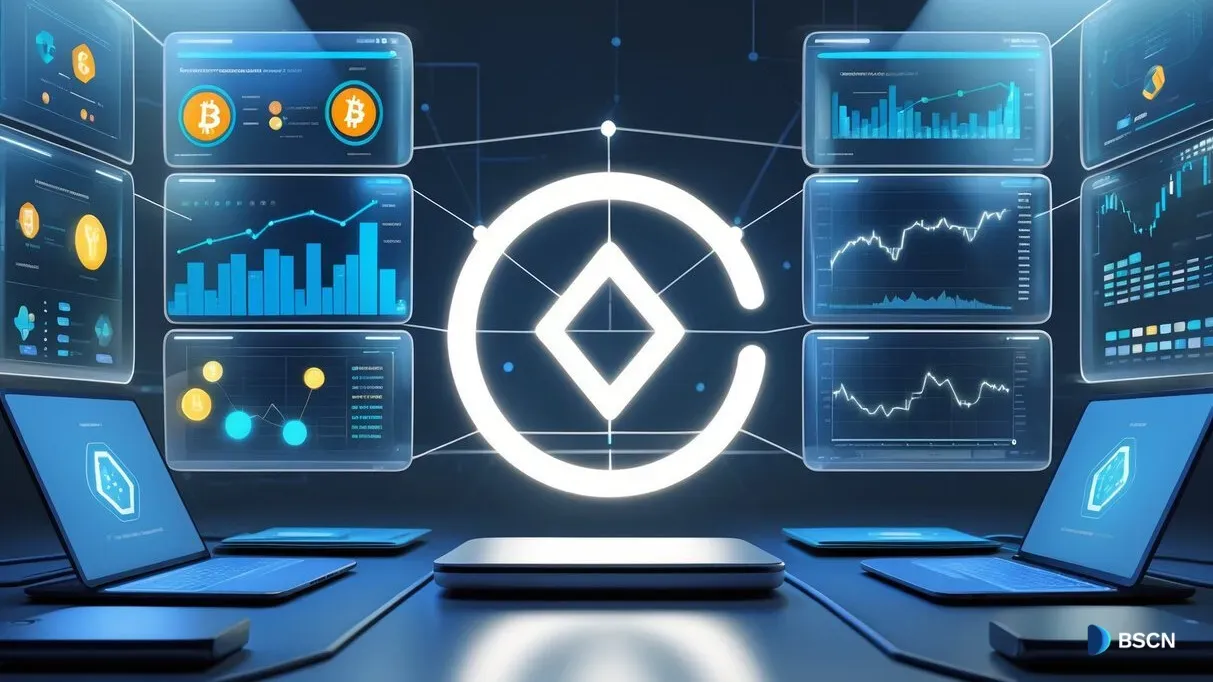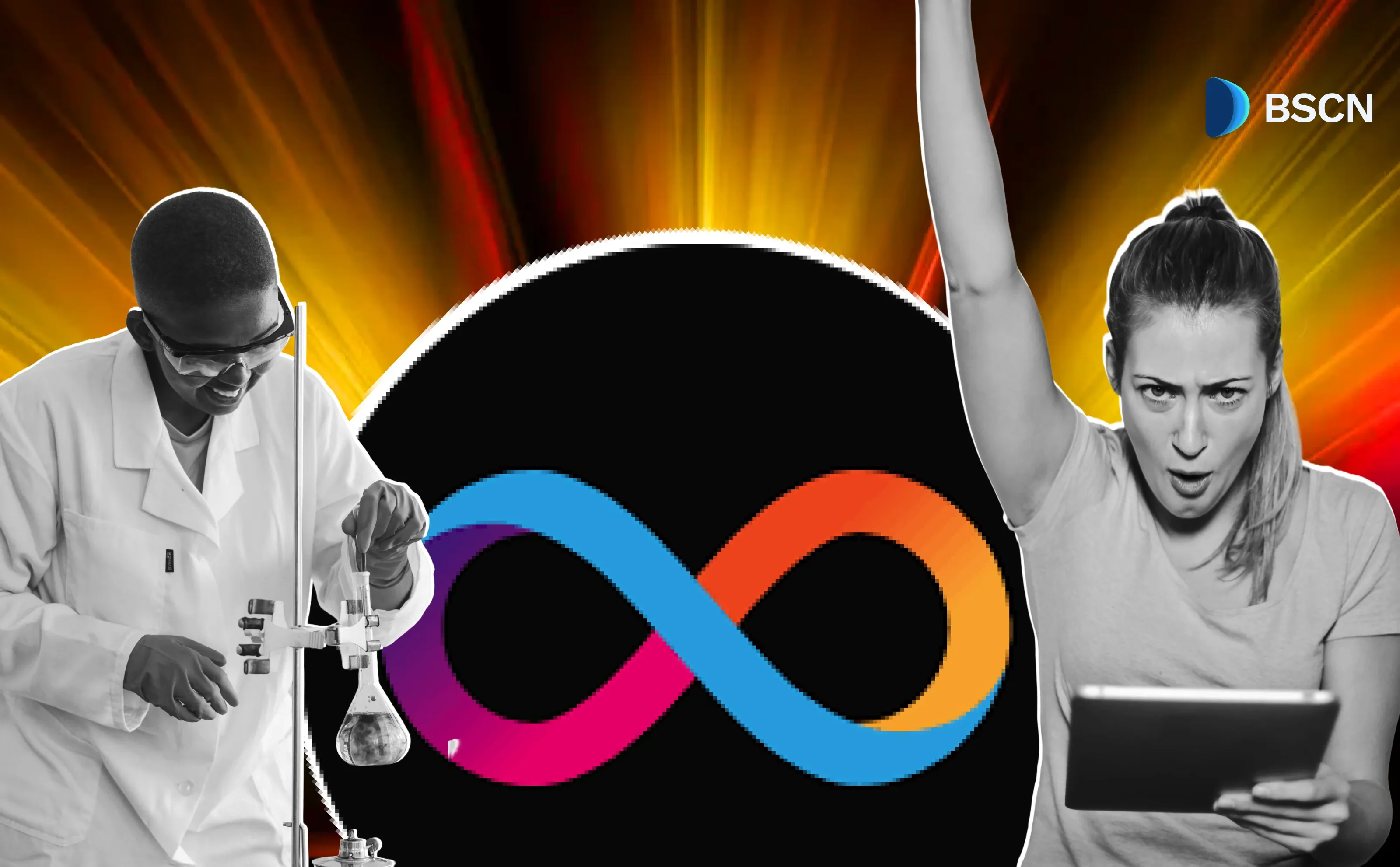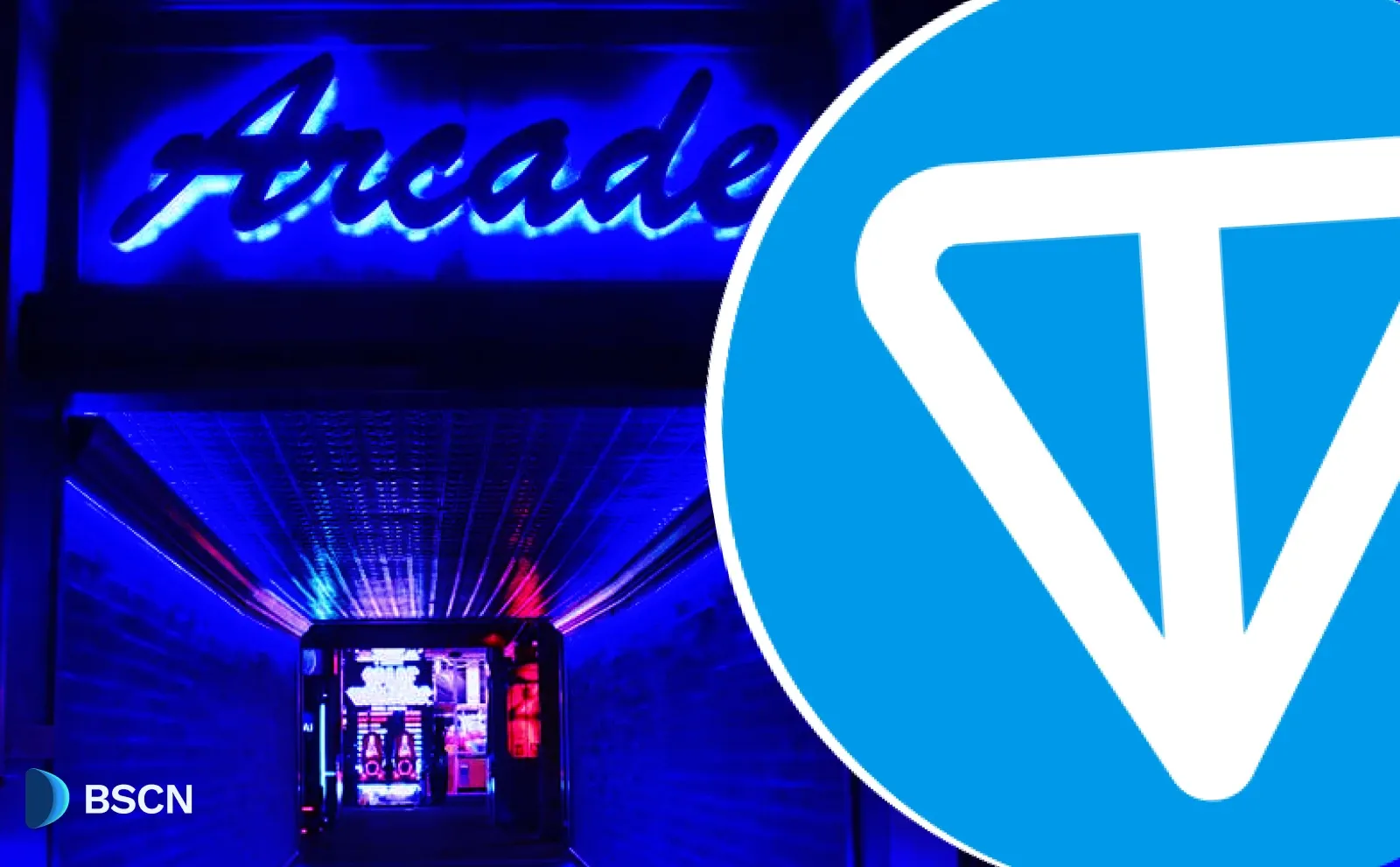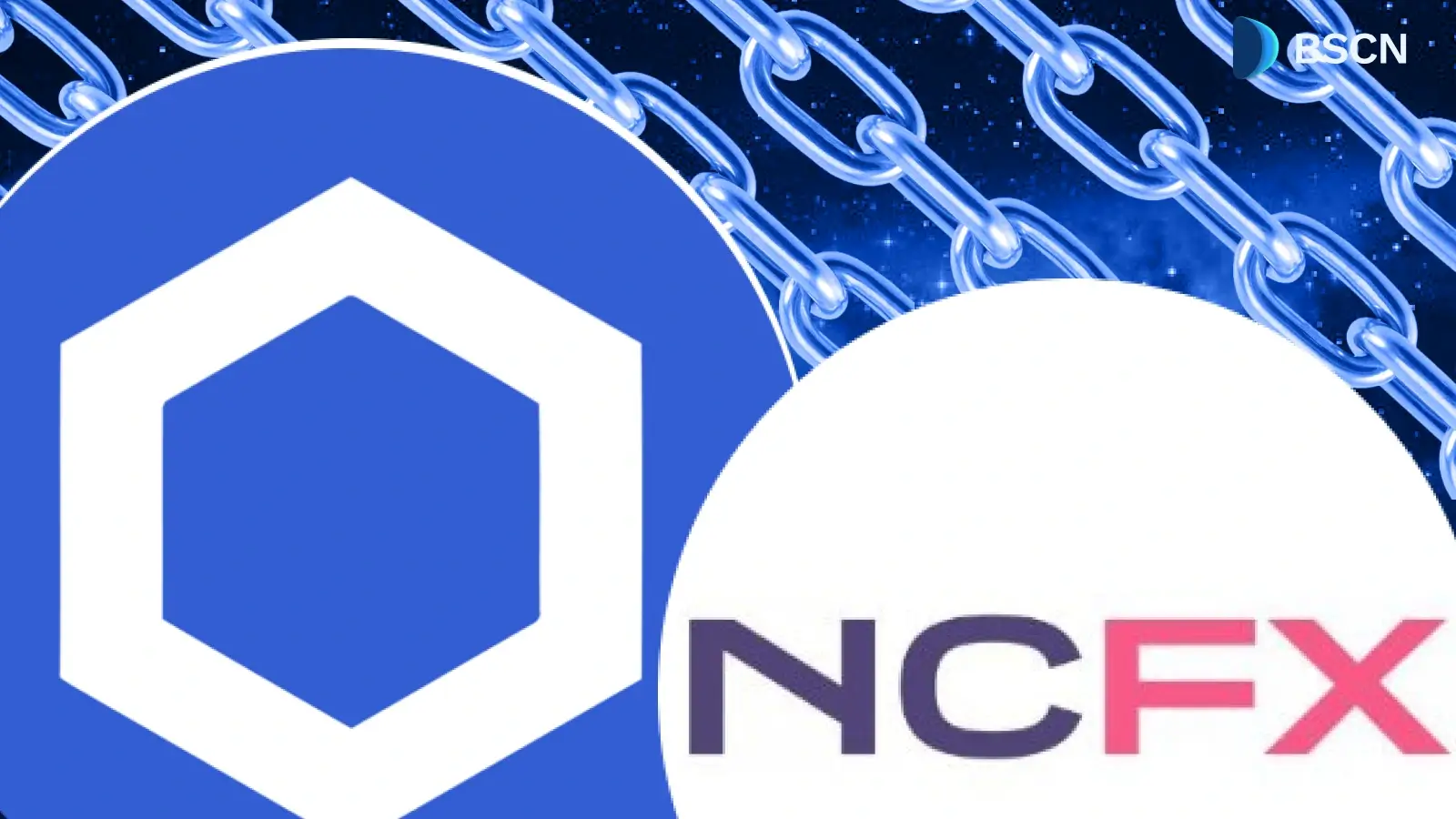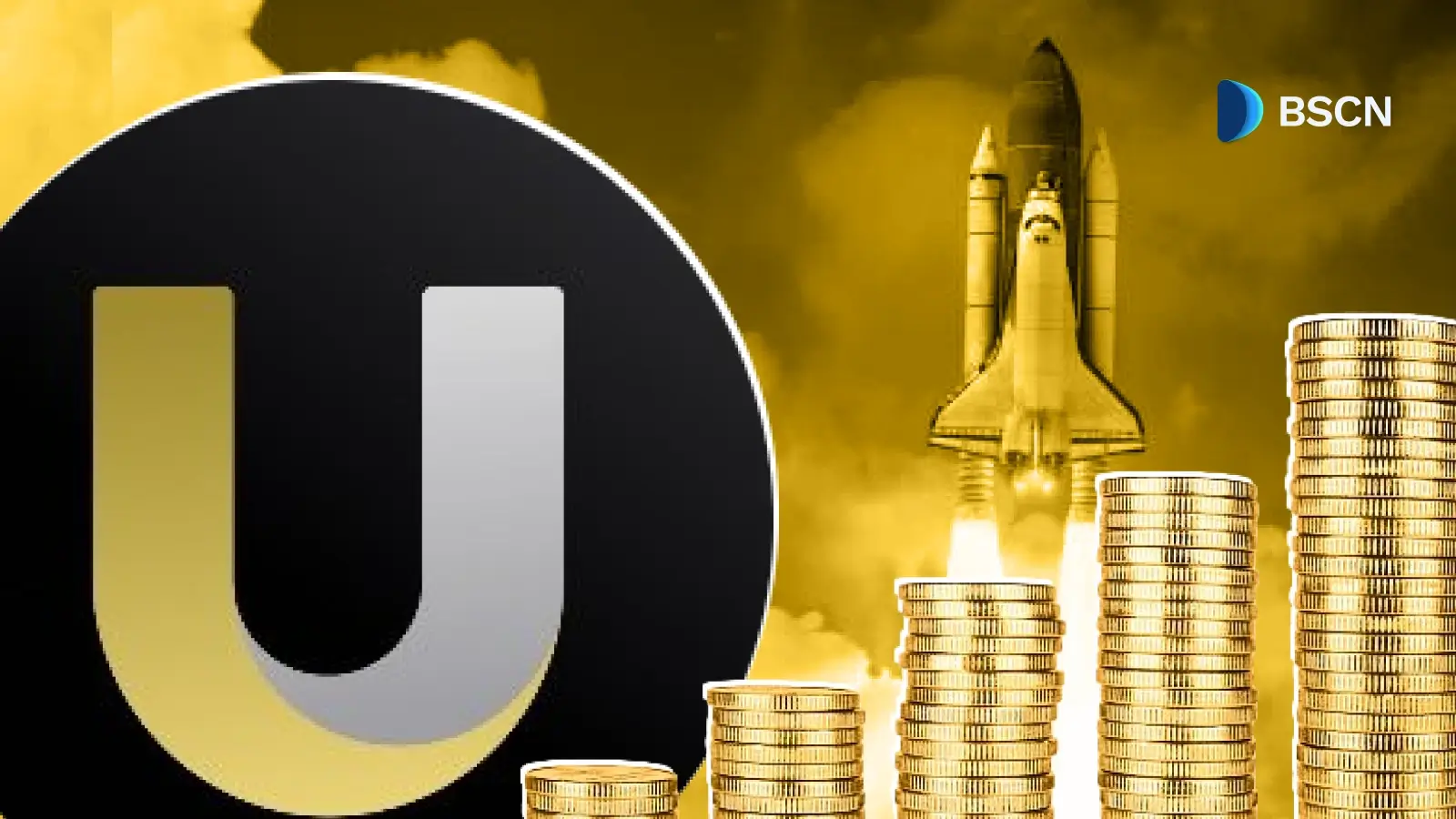Deepdive
(Advertisement)
What is Fogo Chain?: The Ultra-Fast Blockchain for Institutional Finance

Discover how Fogo blockchain achieves 20ms block times and 45,000 TPS through innovative technology built on Solana's Virtual Machine, bringing real-time transaction capabilities to institutional finance.
Crypto Rich
April 11, 2025
(Advertisement)
Table of Contents
Imagine a blockchain as fast as NASDAQ, processing trades in milliseconds while staying decentralized. Today, traditional financial exchanges execute transactions in microseconds, while even the fastest blockchains lag seconds behind. This speed gap has blocked serious institutional adoption, with traders potentially losing millions while waiting for blockchain confirmations.
Fogo is a new base-level blockchain (Layer 1) built on the Solana Virtual Machine (SVM) that aims to close this critical gap. By delivering transaction times under 40 milliseconds and handling over 45,000 transactions per second (TPS) in testnet conditions, Fogo redefines real-time performance for blockchain applications. When compared to existing solutions like Ethereum (processing less than 50 TPS) or even Solana (which experiences congestion at around 5,000 TPS), the breakthrough becomes clear.
Fogo's main goal is to connect traditional finance (TradFi) with blockchain technology. It supports applications that need split-second processing, such as:
- High-speed trading systems
- Instant payment settlements
- Real-time asset tracking
All these functions come with the security and transparency benefits of blockchain technology, while avoiding the centralization that typically accompanies such high performance.
What is Fogo?
Fogo is a high-speed blockchain built from the ground up for banks and financial institutions. The name "Fogo" means "fire" in Portuguese, highlighting the system's blazing speed. As the team at Fogo states, they're "defying physics to deliver real-time experiences at scale."
Unlike many blockchain projects that must choose between being fast or being decentralized (spread across many computers), Fogo is designed to achieve both goals through careful architecture choices. It works on the same foundation as Solana (called the Solana Virtual Machine) but adds new technology to make it much faster.
Recent testnet results show impressive performance: Fogo processes transactions in just 20 milliseconds (faster than you can blink) and handles 45,000 transactions per second using only 21 validator computers. To put this in perspective, a hedge fund using Fogo could execute hundreds of trades before Solana confirms even one. These speeds are fast enough to potentially compete with traditional financial systems for the first time.
So how does Fogo achieve this blazing speed? It starts with three innovations.
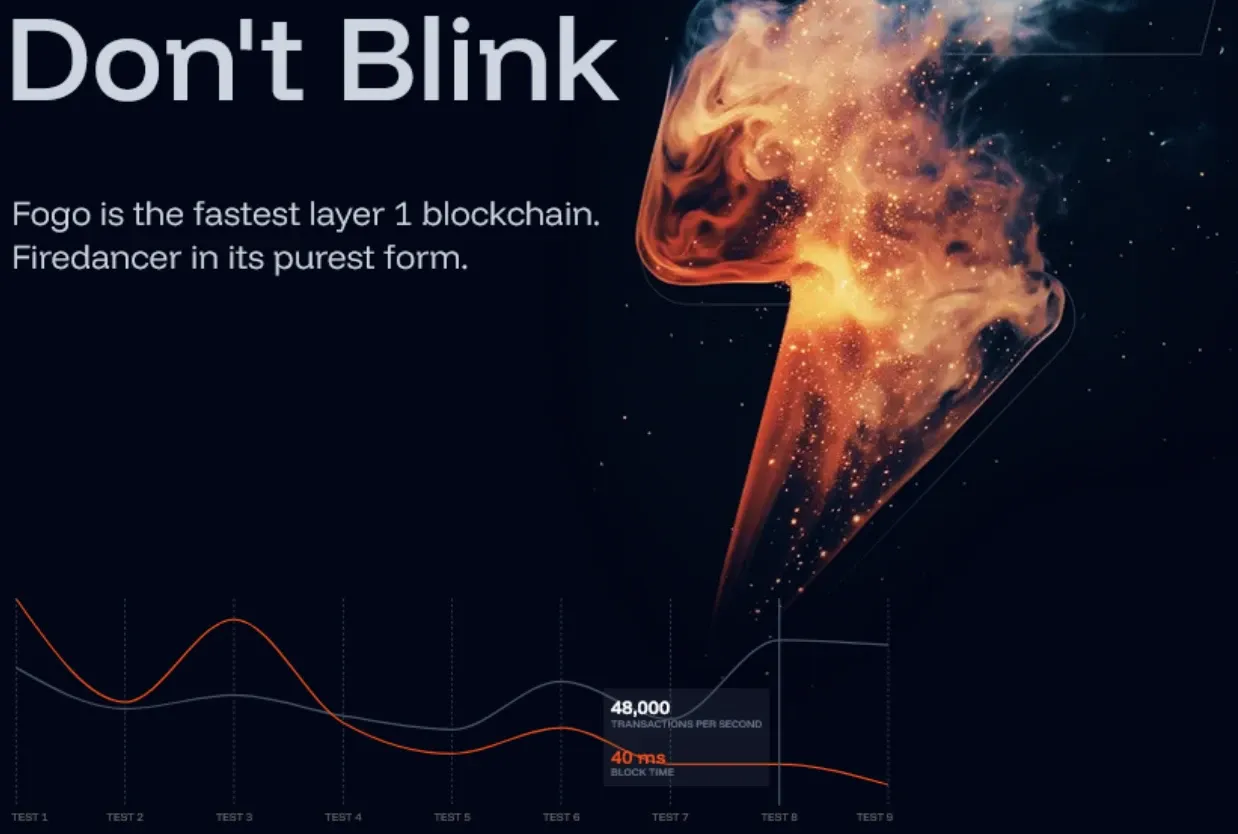
The Tech Powering Fogo's Speed
Unified Firedancer Client
Most blockchains, including Solana, use different software versions (called clients) to connect to the network. This creates diversity but slows things down, as the system can only run as fast as its slowest client.
Fogo takes a smarter approach by using just one high-performance client based on Jump Crypto's Firedancer software. Initially starting with a hybrid version called "Frankendancer," Fogo is transitioning to pure Firedancer. According to the whitepaper (Section 3.1), this upgrade to the full implementation will happen soon and will deliver even higher throughput.
This approach offers several key advantages:
- Eliminates bottlenecks caused by client diversity
- Leverages Firedancer's optimized parallel processing capabilities
- Uses advanced memory management techniques for better performance
- Allows the network to run at maximum speed rather than being limited by slower clients
Multi-Local Consensus
Fogo introduces a dynamic consensus model inspired by traditional finance's "follow-the-sun" trading approach. Validators co-locate in geographic "zones" (typically data centers) to achieve ultra-low latency. These zones rotate across epochs (not during epochs) to maintain jurisdictional decentralization and infrastructure resilience.
During normal operation, consensus happens within these low-latency zones, with a fallback to global consensus (400ms block time) if issues occur. Validators use global keys for identity and zone-specific sub-keys for consensus. This approach works particularly well during major market events, like Federal Reserve announcements, where having validators near financial hubs can optimize price discovery.
Curated Validator Set
Instead of an open validator model, Fogo implements a carefully selected approach. A permissioned set of 20-50 validators ensures consistently high performance. This system is initially managed by a genesis authority, with plans to transition to validator-led governance where a two-thirds supermajority vote is required for both membership changes and protocol updates.
This structure specifically mitigates abusive practices like predatory MEV (Maximal Extractable Value), where validators might reorder transactions to extract profit at users' expense. By carefully selecting and monitoring validators, Fogo prevents these exploitative practices while maintaining proof-of-stake decentralization. The quality control also ensures that under-provisioned nodes can't slow down the entire network, allowing Fogo to maintain its performance targets.
SPL Token Fee Payment (Proposed)
Fogo is exploring a feature to enhance user accessibility. Users could pay transaction fees with SPL tokens, not just SOL. A permissionless relayer marketplace would facilitate these payments, lowering barriers to entry without altering consensus rules. This approach would make the network more accessible to various user groups who might prefer using different tokens for fees.
Real-World Applications
Fogo's technical architecture opens up possibilities for financial applications that simply weren't viable on previous blockchains. Let's explore where this speed advantage makes the most difference:
High-Frequency Trading
With 20ms block times, Fogo enables trading strategies previously impossible on blockchains:
- Algorithmic trading requiring near-instant execution
- Market-making with minimal latency
- Arbitrage opportunities across decentralized exchanges
A trading firm using Fogo could execute 1,000 trades before Solana confirms one. This capability represents a significant leap forward, especially for risk management systems requiring real-time updates.
Unlike other fast blockchains that sacrifice compatibility for speed, Fogo maintains Solana's developer-friendly environment while dramatically improving performance. This means trading firms can migrate existing algorithms rather than starting from scratch.
Instant Settlements
Traditional financial settlements often take T+1 or T+2 days to complete. This delay isn't just an inconvenience—it creates systemic risk and ties up capital that could be deployed elsewhere. How much impact could Fogo have here?
Fogo enables real-time settlement of trades and instantaneous cross-border payments. This shift from batch processing to continuous transaction handling significantly reduces counterparty risk through immediate clearing.
Cutting settlement times from days to seconds could generate enormous savings in float costs. For example, a financial institution handling $1 billion in daily settlements could potentially save millions annually by eliminating the multi-day waiting period. This transformation could be particularly valuable for international trade finance and remittance markets.
Real-Time Asset Management
Financial institutions require up-to-the-second information for effective management. Fogo's speed enables live portfolio valuation and risk assessment that updates in real time. Dynamic collateral management becomes possible as values change, while automated compliance and reporting can process instantly.
This instant reporting capability is particularly appealing for regulatory compliance, helping institutions stay in good standing with oversight bodies. Consider how this might transform operations: when a bank currently needs to report its positions to regulators, it often involves overnight batch processing and manual reviews. Fogo could generate those same reports automatically and continuously, reducing risk and operational overhead.
Treasury operations that once required scheduling and delays can now happen continuously, giving financial teams unprecedented control over their assets. The advantages are especially significant for multinational corporations managing currency risk across time zones.
Ecosystem and Compatibility
Solana Compatibility
Fogo leverages the Solana ecosystem while enhancing performance. The system maintains full compatibility with Solana's SVM execution layer, allowing developers to deploy existing applications with minimal changes. This compatibility gives Fogo an immediate advantage over competitors like Sei, SUI, and Aptos, which require developers to learn new programming environments.
Integrated Features
Fogo includes several built-in components that enhance its utility for financial applications:
- Native decentralized exchange (DEX) for trading directly on the blockchain
- Price feeds that provide accurate on-chain data for financial applications
- Liquidity vaults that improve capital efficiency for traders and investors
The platform also includes a Wormhole-powered bridge for cross-chain asset transfers, making moving value between Fogo and other blockchains easy. Whereas most projects require users to piece together multiple solutions, Fogo delivers an integrated ecosystem ready for institutional use from day one. These features combine to make Fogo a robust platform for DeFi and trading applications right from launch.
Community and Development Progress
Fogo Flames Program
To build its community, Fogo has launched an incentive program. Users earn "Flames" (points) through various activities such as staking $PYTH tokens, trading on Ambient Finance, engaging on Discord (nearly 200,000 members), and interacting with Fogo on X. While not officially confirmed, these Flames may lead to future token rewards.
The program has already attracted significant early participation, with @FogoChain amassing over 52,400 followers on X. This robust social media presence indicates strong community interest well before mainnet launch. The March 31, 2025 Testnet Phase 0 announcement generated excitement with verified performance metrics that confirmed their ambitious technical claims.

Development Timeline and Funding
Fogo is moving through a structured development process with strong financial backing. The Devnet is live, achieving 40ms block times and 54,000 TPS in testing environments. The Testnet launched in Q1 2025, with Phase 0 providing permissioned access for select developers. The full Mainnet launch is planned for Q2 2025.
The project has secured $13.5 million in funding, including a $5.5 million seed round led by Distributed Global and an $8 million community round via Cobie's Echo platform. Investors include CMS Holdings, Big Brain Collective, Patrons, and over 3,000 angel investors, reflecting strong confidence from venture capital firms and the broader crypto community.
The Team Behind Fogo
Fogo's founders bring extensive experience from both traditional finance and blockchain, creating a team uniquely positioned to bridge these two worlds.
Robert Sagurton comes from Jump Crypto and has prior experience at JPMorgan, Morgan Stanley, and R3. His career spanning Wall Street institutions and crypto innovation gives him insight into what financial firms actually need from blockchain technology.
Douglas Colkitt founded Crocodile Labs and Ambient Finance, bringing specialized DeFi expertise and a track record of building successful decentralized trading platforms. His technical knowledge complements the institutional background of his co-founders.
Michael Cahill serves as CEO. He previously worked as VP at Morgan Stanley and Jump Crypto and led Pyth Network. His leadership experience in traditional finance and Oracle technology for blockchains makes him well-suited to guide Fogo's development toward mainstream adoption.
Together, this team combines TradFi expertise and blockchain development experience, positioning them to understand and address the needs of institutional users. Their complementary backgrounds help them bridge the gap between traditional financial requirements and blockchain innovation in ways that few other projects can match.
Future Outlook
As Fogo approaches its mainnet launch in Q2 2025, how might this technology reshape the blockchain landscape? Several key factors will determine its trajectory.
The real-world performance under various load conditions will be critical, as many blockchains perform well in testing but struggle under actual network demand. Will Fogo maintain its impressive speed when thousands of traders hit the system simultaneously? The team's background in high-frequency trading environments suggests they understand these challenges better than most.
Institutional adoption rates will determine how quickly Fogo can grow its ecosystem. Integration with existing financial infrastructure presents both challenges and opportunities. The compatibility with Solana's ecosystem gives Fogo a running start, but convincing risk-averse financial institutions to adopt any blockchain technology remains a substantial hurdle.
Competition is heating up, with projects like Sei and Aptos also targeting TradFi use cases. However, Fogo's SVM roots give it a distinct advantage in dApp compatibility. Rather than asking developers to learn new programming models, Fogo allows them to bring existing Solana applications over with minimal changes.
If Fogo delivers on its testnet promises, it could potentially power Wall Street's first truly decentralized high-frequency trading exchange by 2026. The project's commitment to transparency is evident in its technical posts about optimizations like stake-weighted voting, multi-local validator colocation, and adaptive memory management. These detailed discussions show Fogo is focused on addressing the complex technical challenges of high-performance blockchain systems.
Conclusion
Fogo doesn't just burn through transactions—it's torching blockchain's old limits. With transaction speeds under 40 milliseconds and capacity exceeding 45,000 transactions per second, it finally delivers the performance needed for real-time financial applications while keeping blockchain's security benefits.
Fogo achieves this by building on Solana's foundation while adding three key improvements: a single high-performance client, a clever system that groups validators by location for faster processing, and a carefully selected set of validators to maintain quality.
Want to learn more about Fogo? Visit the project's website fogo.io, follow their updates on X @FogoChain, or join the Flames program to get involved before the full launch in mid-2025. Fogo isn't just fast—it's the spark that could ignite blockchain's mainstream financial future.
Read Next...
Disclaimer
Disclaimer: The views expressed in this article do not necessarily represent the views of BSCN. The information provided in this article is for educational and entertainment purposes only and should not be construed as investment advice, or advice of any kind. BSCN assumes no responsibility for any investment decisions made based on the information provided in this article. If you believe that the article should be amended, please reach out to the BSCN team by emailing [email protected].
Author
 Crypto Rich
Crypto RichRich has been researching cryptocurrency and blockchain technology for eight years and has served as a senior analyst at BSCN since its founding in 2020. He focuses on fundamental analysis of early-stage crypto projects and tokens and has published in-depth research reports on over 200 emerging protocols. Rich also writes about broader technology and scientific trends and maintains active involvement in the crypto community through X/Twitter Spaces, and leading industry events.
(Advertisement)
Latest News
(Advertisement)
Crypto Project & Token Reviews
Project & Token Reviews
Comprehensive reviews of crypto's most interesting projects and assets
Learn about the hottest projects & tokens



